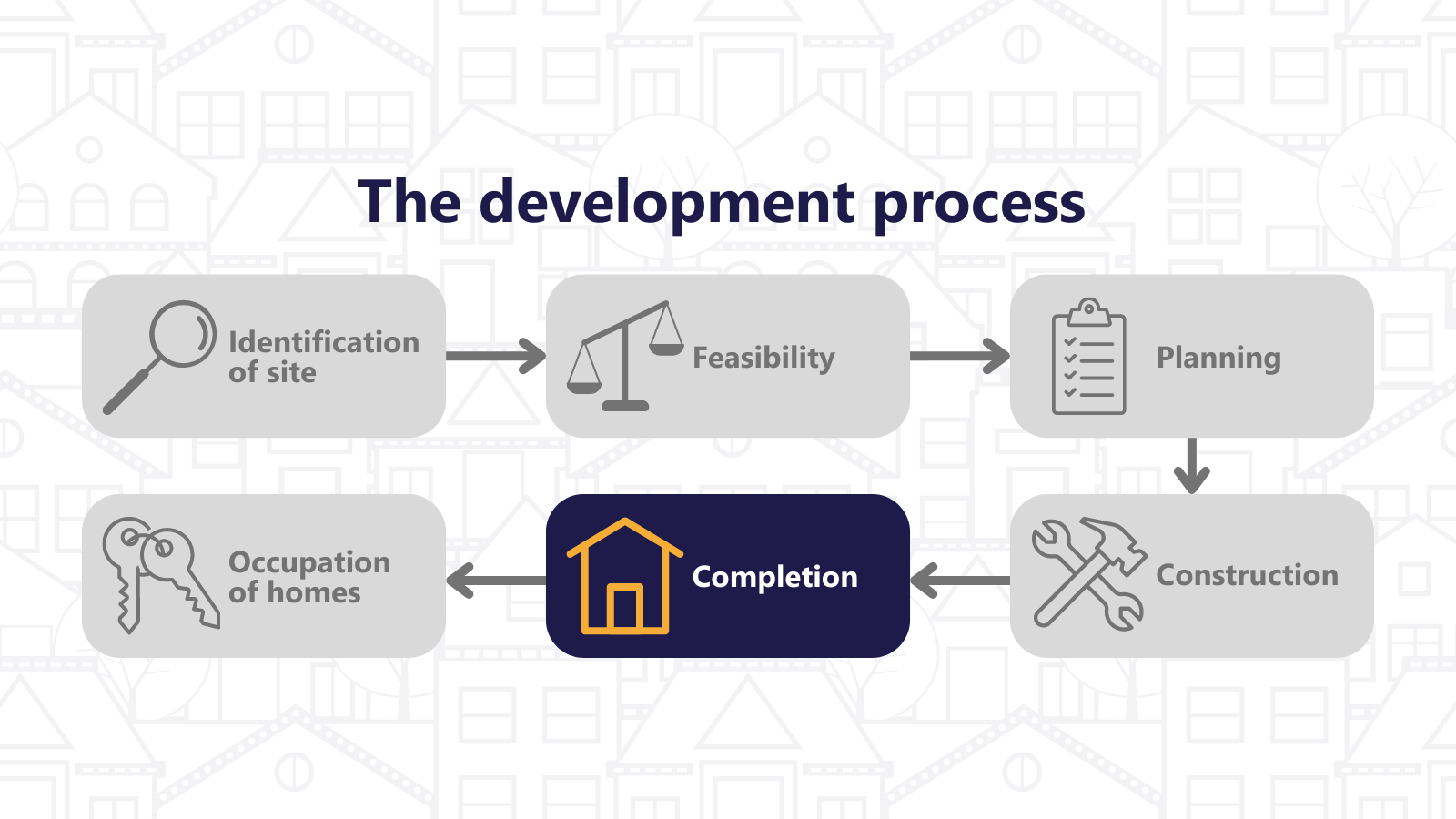Completion


There are two aspects to the completion of the construction works which relate to the physical completion of works and how that is confirmed under the terms of the building contract and secondly, the commissioning of the new homes in terms of documentation and mobilisation of the management structures to facilitate occupation:
Construction – confirmation through the Certificate of Practical Completion
Management – mobilisation of occupation phase of new homes
As the construction works near completion, there are certain key checks and inspections that will be undertaken to allow safe occupation of the new homes.
These include:
• Snagging inspections
• Check ‘As Built’ against ‘As Designed’
• Systematic check of fabric and installations
• Document any minor remedial works
• Keys, building manual, Health and Safety file, home user guides
• Documentation – Building Regulations completion certificates, warranties, gas and electrical installations, planning conditions discharge schedule, building contract certificates, partial retention release
After the new homes are occupied, there will be a series of activities that culminate in the closure of build phase of the project and the conclusion of the development process stage.
Of note are the following:
• Management of Defects Period – usually a 12-month period where the contractor remains liable for rectification of defects which are deficiencies in design, specification or workmanship rather than routine repairs
• Resolution of outstanding financial and construction issues
• Confirmation of road and sewer adoption
• End of Defects Period inspection and completion of those items of work
• Issue of certificates – Making Good Defects, final account, final certificate to release final retentions
• Latent defects – these are defects that emerge beyond the initial defects period, but which were not apparent through observation or inspection and for which the contractor is liable for up to 12 years under the terms of the building contract
Whilst there are various monitoring measures during the construction phase and the post-occupation defects period, very often there is limited if any evaluation undertaken of the development process upon its conclusion as the project moves into the live stage. Areas of interest for a post-completion of development process evaluation might cover the following areas:
• Evaluation of roles and performance at all stages of process
• Evaluation of design by residents and project team
• Review against management and maintenance requirements
• Review against KPIs and objectives
• Client 360 degree review
• Post-completion financial viability model using actual outturn costs
In summary, such an evaluation can provide for important lessons learned for future projects but also an important review of actual or outturn performance and viability against the parameters and standards established at the inception of the project and at key stages and milestones during the development process.












